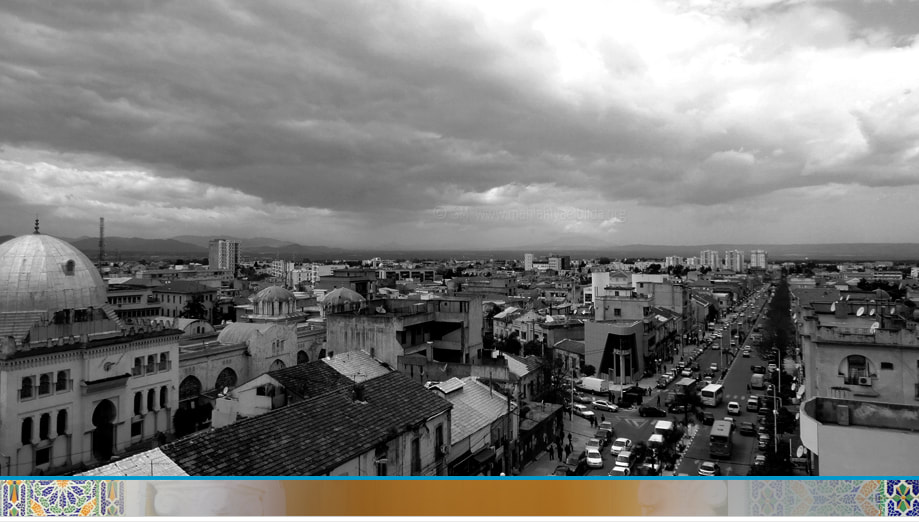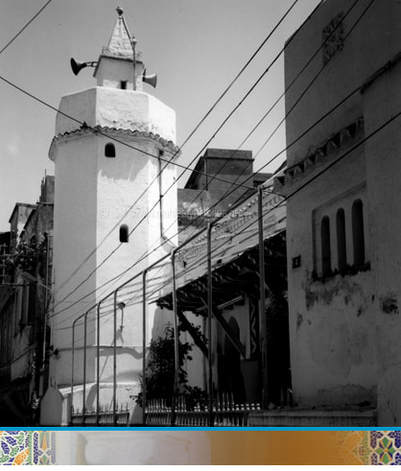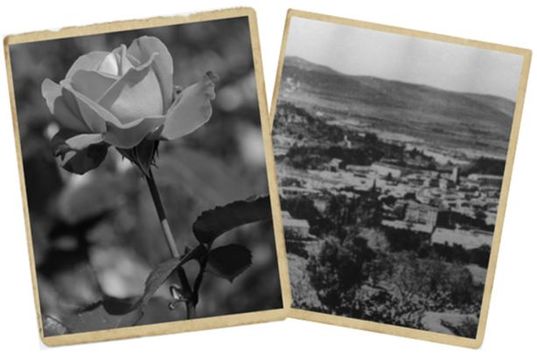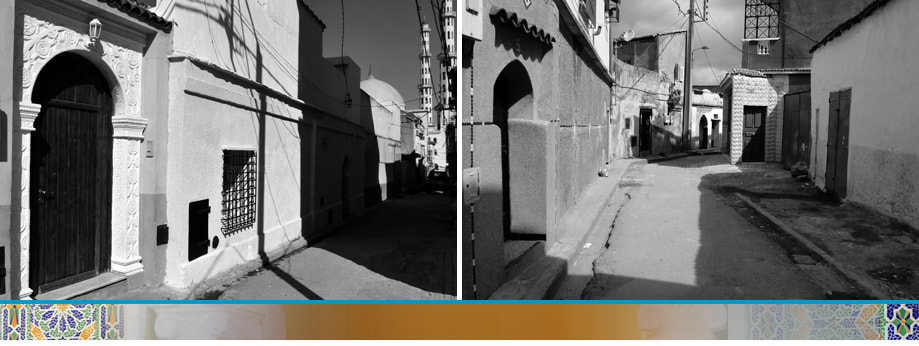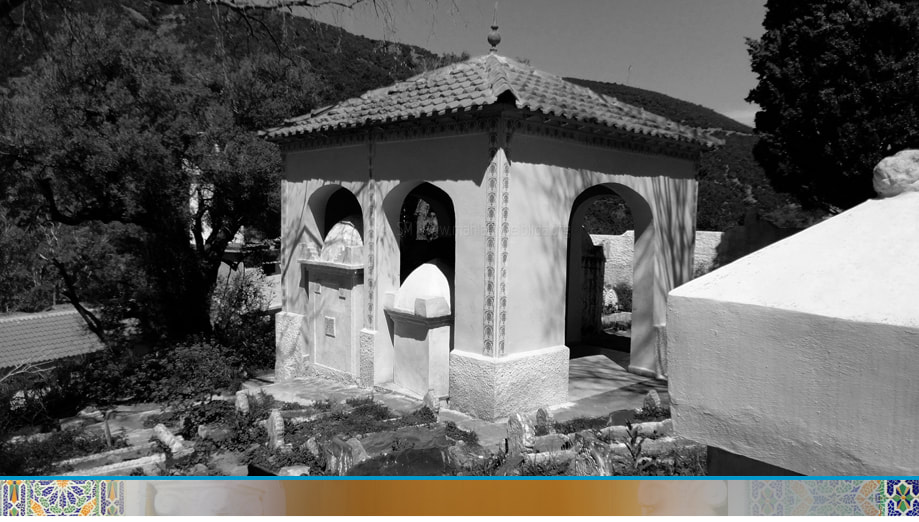Blida's foundation
Blida was founded in the early 16th century. The word Blida originates from the classical Arabic word 'Boulaida', meaning small country or city. It is the diminutive of the Arabic word bilad (country)/belda (city), which becomes in Algerian Arabic dialect Blida and used by the French during their colonisation of Algeria.
Blida was blessed with natural water resources and fertile lands. It would go on to become the capital of the Mitidja region in Algeria. Blida's history is part of the whole region's history.
Blida was blessed with natural water resources and fertile lands. It would go on to become the capital of the Mitidja region in Algeria. Blida's history is part of the whole region's history.
'Ottoman Turks' era 1512 - 1830
In the beginning of XVI (16th) century, Algeria became a province of the Ottoman Turkish Empire after the establishment of the Ottoman Sanjak (province) of the Maghreb which governed over Algeria, Tunisia and Tripoli.
Fearing that Algiers would fall to the Spanish, who were attacking to invade, it was called upon the Muslim Ottoman Turks to protect the city shores and its sea. Following, Algeria were under Turkish protection and rule until the French colonialist invaded Algeria in July 1830.
King Sultan Selim I of the Ottoman Empire granted the Beylrebey (governor-general rank) of Algiers regency and Pasha (admiral) to Kheirddine (known to the Europeans as Barbarossa) following in his oldest brother's footsteps: Oruc known as Baba Arouj. Baba Arouj was known for transporting the Spanish Muslim refugees from Spain to Algeria and North Africa after the fall of Andalusia in the Iberian Peninsula, known as the ‘Reconquista’ in 1492. Baba Arouj was killed in battle defending the western town Tlemcen against the Spanish in 1518. Pasha Kheirddine then took the helm and drove the Spanish out of the Algerian shore towns.
Fearing that Algiers would fall to the Spanish, who were attacking to invade, it was called upon the Muslim Ottoman Turks to protect the city shores and its sea. Following, Algeria were under Turkish protection and rule until the French colonialist invaded Algeria in July 1830.
King Sultan Selim I of the Ottoman Empire granted the Beylrebey (governor-general rank) of Algiers regency and Pasha (admiral) to Kheirddine (known to the Europeans as Barbarossa) following in his oldest brother's footsteps: Oruc known as Baba Arouj. Baba Arouj was known for transporting the Spanish Muslim refugees from Spain to Algeria and North Africa after the fall of Andalusia in the Iberian Peninsula, known as the ‘Reconquista’ in 1492. Baba Arouj was killed in battle defending the western town Tlemcen against the Spanish in 1518. Pasha Kheirddine then took the helm and drove the Spanish out of the Algerian shore towns.
The Turkish link
|
It was under the leadership of Sid Ahmed El Kebir, with the support of Pasha Kheirddine Sovereign of Algiers and the religious leaders of the local tribes of Beni Saleh, Ouled Soltane and Ouled Hadjar Sid Ali and others, that Blida was founded in 1535. The Andalusians refugees also enormously contributed to the foundation of the town. Known for his wisdom and great leadership skills, Sid Ahmed el Kebir managed to unite the local tribes who were often fighting among themselves.
It was under Turkish rule when Blida first flourished and saw vitality and prosperity. It became the attraction resort of natural scenery in the Mitidja plain. The Turks found that Blida was a strategic area too, situated beneath the Atlas Tell mountains with crossroads linking many other areas from south to north and east to west of Algeria. During the period 1530-1545, Blida saw the construction of the Djoun area and Douirette, known as the Casbah of Blida. Pacha Kheirddine ordered and financed the construction of the first Mosque in Blida, in the area of 'Place Ettoute' (Place 1st November). A hamam (public bath) and a communal village oven were also constructed in the ‘Djoun’ area for the use of the locals. |
El Djoun, It is from this little urban development that
a small town was born and was named by Sid Ahmed el Kebir as el Boulaida
a small town was born and was named by Sid Ahmed el Kebir as el Boulaida
El Djoun became the core and heart of Blida’s creation. 'El Djoun’ neighbourhood had the first housing development at the time with Arab style housing ‘Dar/Dyour el Arab’. It is from this little urban development that a small town was born and was named by Sid Ahmed El Kebir as ‘el Boulaida’ (diminutive of the Arabic word balad (country)/belda (city), known in French as Blida.
To the South East of the town, Douirette was built, a popular neighbourhood of Blida, similar to the Casba of Algiers in style and architecture. Douirette is diminutive word to dar (house). Some have suggested that Douirette was property that was owned by Ouled Soltan tribe.
To the South East of the town, Douirette was built, a popular neighbourhood of Blida, similar to the Casba of Algiers in style and architecture. Douirette is diminutive word to dar (house). Some have suggested that Douirette was property that was owned by Ouled Soltan tribe.
Historical moment "The little Rose"
|
Blida is known as 'El Ourida', the 'little rose'. A famous name that was given by Sid Ahmed Ben Youcef from Meliana when he visited Sid Ahmed El Kebir in Blida. He was a poet and was known for being a pious man (Wali Saleh). He said: "They have called you the small town (El Boulaida), me, I have called you the little rose (El Ourida)." |
Blida's tribal life before its foundation
Before Sidi Ahmed el Kebir's arrival and the foundation of Blida, there were tribes living in the hills and mountains. These tribes were known as Kbail or the Djbeyliya (those who live in mountains) who among them were Atlas Tell Amazigh (Berber) speakers. They are the natives of the area and the Maghreb (North African countries) as a whole.
There were the Beni-Khelil in the north and the Beni Saleh and Beni Misra in the West area of the town. These tribes were living in a hamlet and in small groups within the valley. In the town itself, there were small tribes consisting of Ouled Soltan in the south (present-day Douirette) and Hadjar Sid Ali tribes in the north (present-day Placette Enssara). The small villages consisted of very basic housing and were situated at present-day Placette Enssara or la Place des Pommes, known as the European market during the French occupation.
There were the Beni-Khelil in the north and the Beni Saleh and Beni Misra in the West area of the town. These tribes were living in a hamlet and in small groups within the valley. In the town itself, there were small tribes consisting of Ouled Soltan in the south (present-day Douirette) and Hadjar Sid Ali tribes in the north (present-day Placette Enssara). The small villages consisted of very basic housing and were situated at present-day Placette Enssara or la Place des Pommes, known as the European market during the French occupation.
Sid Ahmed el Kebir and the arrival of the Andalusians
Some of the Spanish Andalusians who arrived from Spain (after the fall of Andalusia in the Iberian Peninsula, known as the ‘Reconquista’ in 1492), settled in Blida and many other parts of Algeria.
In Blida, they settled between el Djoun area and Bab Edzair. There are suggestions that the word ‘el Djoun’ derived from the Arabic word ‘el Ladji’oun’ (refugees). Another suggestion is that ‘el Djoun' derived from the word Djound (soldiers) of Andalusia. The Andalusians carried valuable knowledge which they used and contribute in building the town. They introduced housing architecture, embroidery of leather, agriculture and water irrigation. Blida’s prosperity was apparent. This set up a foundation and shaped not only Blida as a town but its lifestyle too. Sid Ahmed el Kebir and the Andalusians were behind the water irrigation and redirection of the water from the Atlas Mountain to the town of Blida and its surroundings.
There is no doubt that part of the architecture and construction of the city were made by Spanish Muslims from Andalusia who were in Blida. There are also some suggestions that Sidi el Kebir, the founder of Blida used the coastal harbours of Tipasa, Cherchell and Tenes (Chlef province) to bring in the refugees. It is said that some Andalusians brought their house keys with them, thinking it was only a temporary move and that they would soon return back to Spain.
In Blida, they settled between el Djoun area and Bab Edzair. There are suggestions that the word ‘el Djoun’ derived from the Arabic word ‘el Ladji’oun’ (refugees). Another suggestion is that ‘el Djoun' derived from the word Djound (soldiers) of Andalusia. The Andalusians carried valuable knowledge which they used and contribute in building the town. They introduced housing architecture, embroidery of leather, agriculture and water irrigation. Blida’s prosperity was apparent. This set up a foundation and shaped not only Blida as a town but its lifestyle too. Sid Ahmed el Kebir and the Andalusians were behind the water irrigation and redirection of the water from the Atlas Mountain to the town of Blida and its surroundings.
There is no doubt that part of the architecture and construction of the city were made by Spanish Muslims from Andalusia who were in Blida. There are also some suggestions that Sidi el Kebir, the founder of Blida used the coastal harbours of Tipasa, Cherchell and Tenes (Chlef province) to bring in the refugees. It is said that some Andalusians brought their house keys with them, thinking it was only a temporary move and that they would soon return back to Spain.
It was Sid Ahmed El Kebir, with the support of Pasha Kheirddine Sovereign of Algiers and the religious leaders of the local tribes of Beni Saleh, Ouled Soltane and Ouled Hadjar Sid Ali and others, that Blida was founded in 1535.
HISTORY FROM THE DISTANT PAST
History is a sensitive and delicate subject that relies on many factors. How many ancient written manuscripts of Blida are in existence? How much of this heritage was protected against theft, negligence and disintegrated through natural causes such as heat, light, inadequate storage, etc. How many preventive measures were there to preserve archives of centuries ago? R E A D M O R E >>


